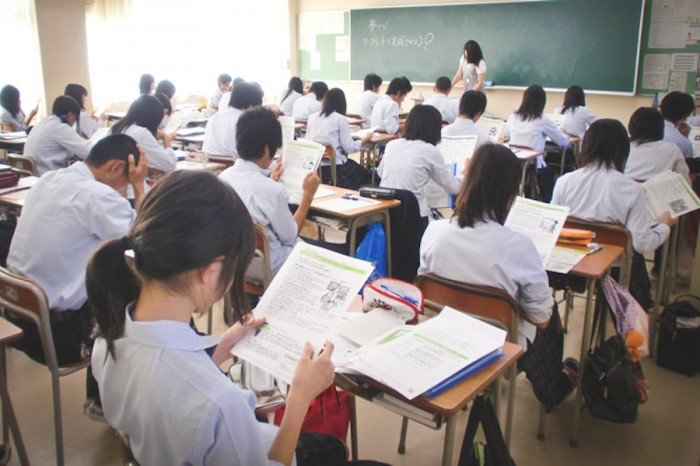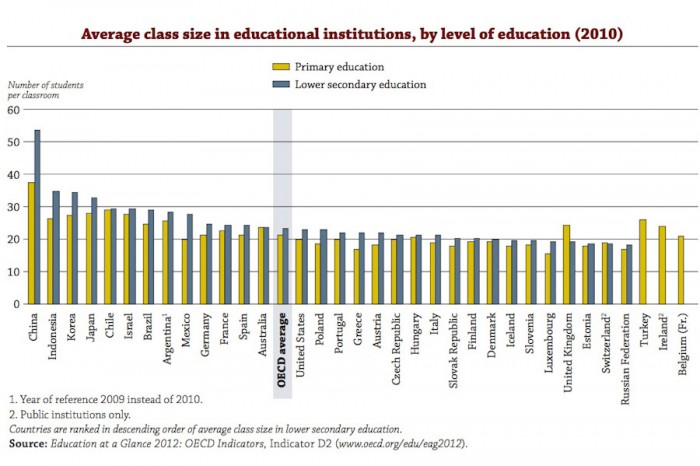
Update 11/10/14: Backers of I-1351 declared victory Saturday, and the latest count showed the initiative passing by over 18,000 votes.
There’s been a lot of fuss and frustration over the dismal state of Washington’s public education system. Case in point, as of last year Washington had the 47th highest student to teacher ratio in the nation.
The state’s largest teachers union offered a solution: Initiative 1351, which would mandate reducing class sizes to under 25 students for grades four through 12, and hiring thousands of new teachers. After strong polling for most of the campaign season, the initiative is now too close to call, with the latest count showing the “yes” camp leading by narrow margin of 4473 votes.
Within the past 15 years, at least 40 other states have undertaken reforms to reducing class sizes. Washington education researchers generally agree that smaller class sizes, particularly in lower secondary levels, can help students receive more one-on-one attention with their teachers and are linked with better test scores, higher graduation rates, and fewer dropouts.
“Smaller class sizes allow kids to receive individual attention” said Randy Dorn, guest columnist to The Seattle Times, and Washington superintendent of public instruction. “It builds the personal bonds that foster self-confidence and self-awareness so necessary for effective learning.”
But international data suggests it might not be that simple. A 2012 study from the Organization for Economic Co-operation and Development (OECD), found that very few countries that invested in resources to decrease class sizes saw a direct improvement in student performance.
There’s a “trade-off” that policy makers must make between having smaller class sizes or paying higher salaries to teachers, Andreas Schleicher, the OECD’s director for education and skills told the Telegraph.
“You can spend your money only once, so if you have a fixed amount of money that’s the kind of trade-off you have to make,” he said.
Schleicher also pointed out that top performing countries like Japan, Singapore, Finland, and Korea has chosen the latter, “prioritizing teaching and teachers over infrastructure and class size.”

A recent ranking showed that some of the world’s top education systems actually have very large class sizes.
Take for instance South Korea and Finland: Both countries rank in the top five — with South Korea taking first place — in the 2014 Pearson Global Report on Education. The report includes major educational factors including GDP, educational attainment, expenditure per student to compile a hefty ranking of countries from first to fortieth, with the United States placing fourteenth internationally.
Interestingly, those two countries have taken opposite approaches to class sizes in lower secondary education, with Finland having less than 20 students per class while South Korea has more than 34 students.
On a side note, Hong Kong, China — which ranks fourth on the Pearson index, has an astounding average class size of 50 students.
Juliette Birkner, a sophomore at the University of Washington, says she voted yes on I-1351. During her adolescence, Birkner attended a local private school with small class sizes.
“A college classroom with a thousand students is really intimidating” said Birkner. “But it’s different in college than it it is in elementary schools. Kids need that extra attention.”
A reduction in class sizes might sound like a good idea, but curing Washington’s education woes will mean going beyond the “one size fits all” mentality.


It’s good to have an international perspective on this local issue.
Thanks for bringing this information to public attention .